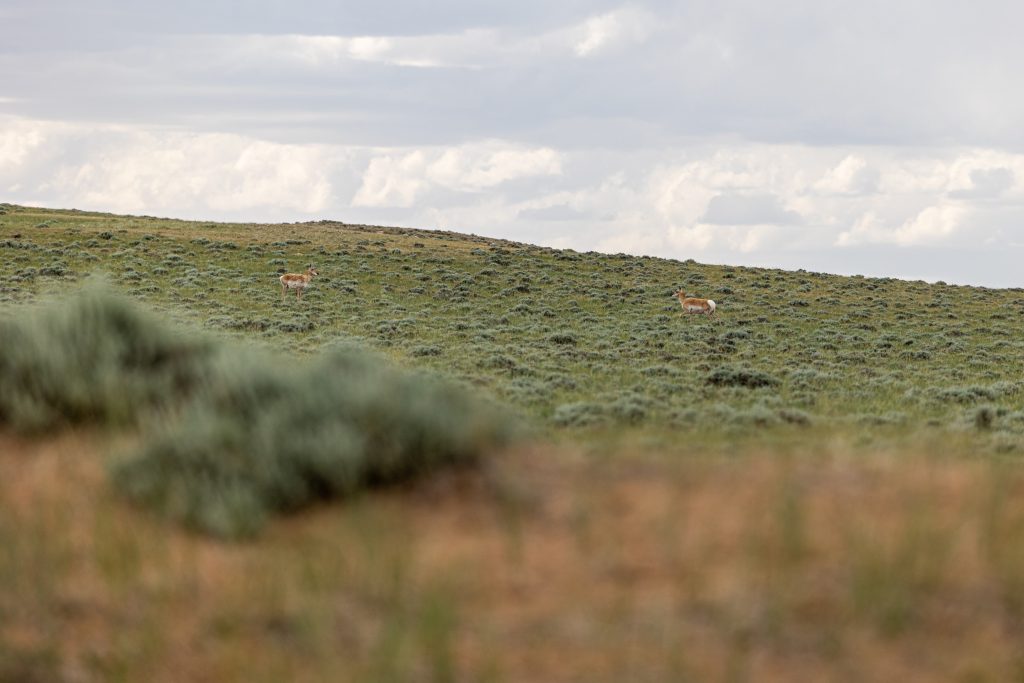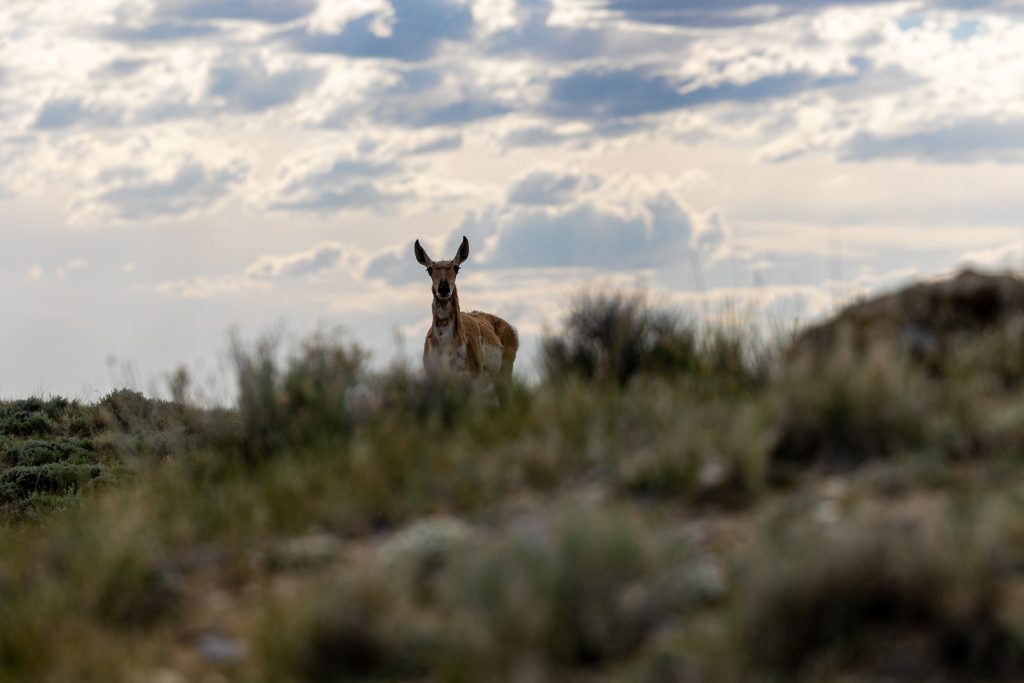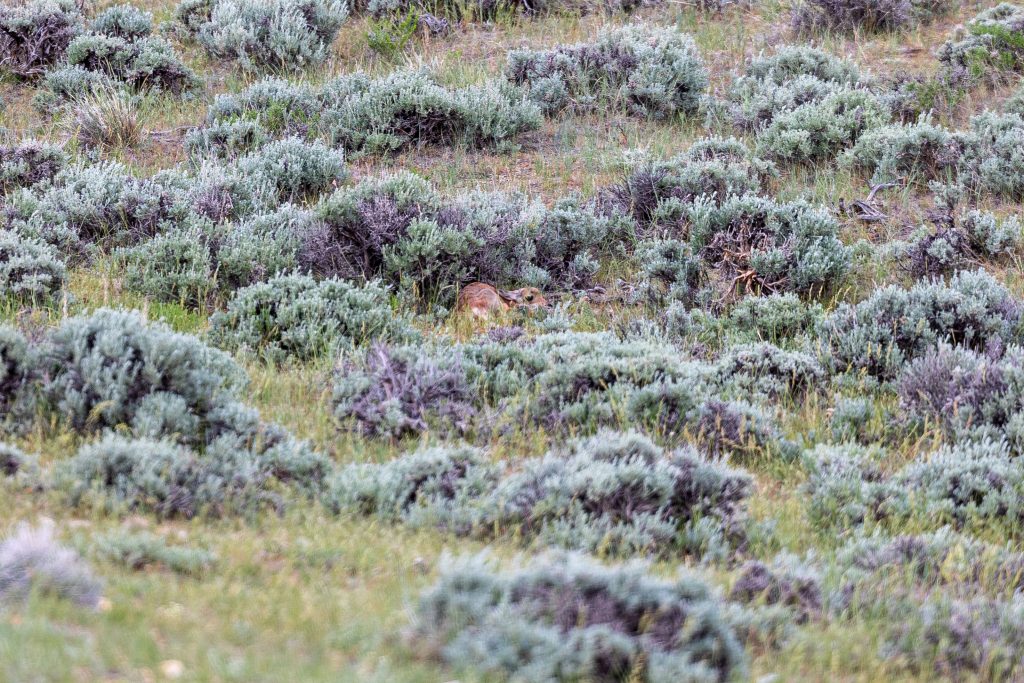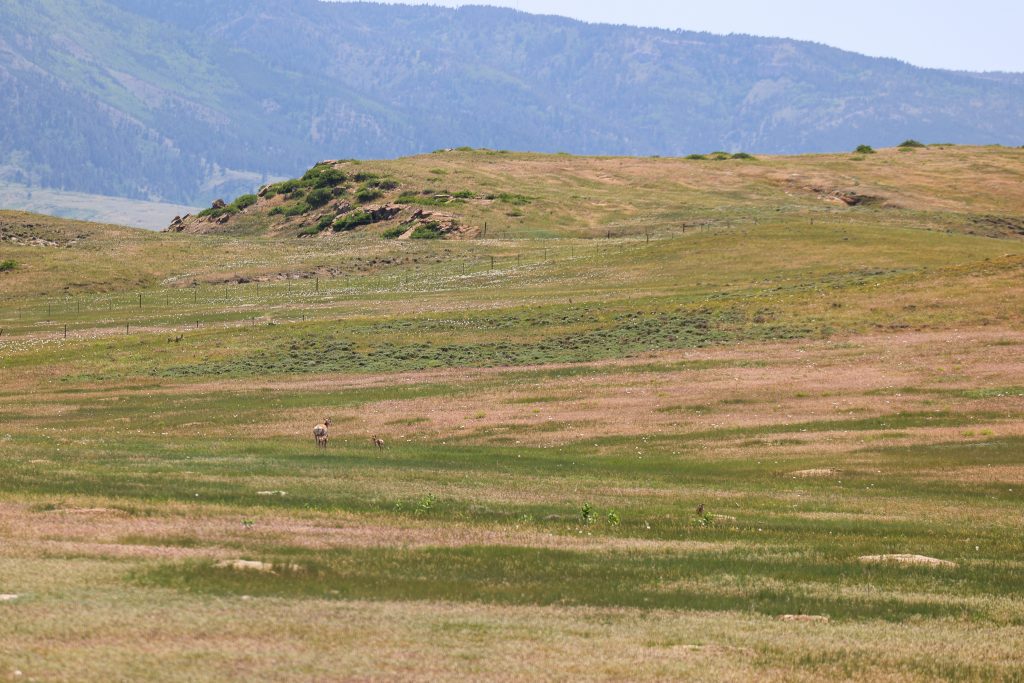Antelope Young~ Born to Run
Doe antelope behavior makes a noticeable change as spring turns to summer in Wyoming. Antelope are typically on high alert. There is very little they do not see, hear or take an interest in. During the last few weeks of May and beginning of June however, some of their skittish behavior fades away. Pronghorn does seemingly adopt a far more lackadaisical mood. Could it be the heat?

That is a good guess, but this shift in attitude is more than just heat exhaustion. In the spring, large herds of antelope break out into smaller groups, dotting the plains and sage covered hills of Wyoming. The buck antelope will wander their own way and smaller groups of does will meander together. By the end of May and beginning of June, whether it be hot or not, the does are nearing the end of pregnancy. A thick belly can be noted and their energy level is certainly impacted. They are content to wander, lounge and graze.
Female antelope delivery their babies and jump right back into action. Their keen eyes and incredible bursts of speed are some of their protective mechanisms, but these moms aren’t running far. Not without their babies. They may look thinner and have obviously delivered their young, but where are the babies?

Like other mammals such as deer and elk, antelope leave their young in a secure location. They are often gone for hours, returning only to feed them a few times a day. Daybreak is the best time to view them nursing and then again in the pale light of dusk before they bed down for the night.

Fawns are bedded down in the thick sage and bushes. They instinctively know to remain still and quiet until their mother returns. Antelope fold their spindly legs up underneath them and lay low, but don’t think they wont spring into action when threatened by a predator. Antelope young are born ready to run!
Its great fun to watch this circle of life continue and to see healthy antelope herds maintained by conservation and ethical hunting practices.


